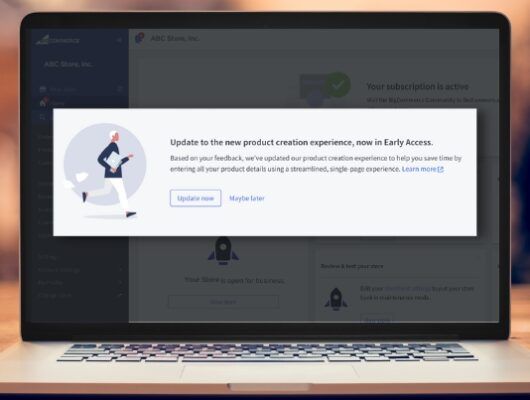“Convenience” became the most important buzzword in 2020. And if you’re trying to keep your business relevant for your customers, you’ve spent the past year finding ways to adjust your products and services to meet these new expectations.
Mobile conversion rates aren’t as big or flashy as video ads or social media marketing. But at the end of the day, creating a strong m-commerce strategy is laying the groundwork for long-term (and repeatable) success. And that might be your business’s best bet for 2021.
The Rapid Rise Of Mobile Commerce
E-commerce is very much becoming a driving force, a juggernaut that every industry will have to embrace in order to stay relevant. That became particularly true after a global pandemic forced widespread social and economic changes.
Two out of three people (aged 18-34) shifted to online shopping because of the pandemic. Those numbers solidified the shift. That, in turn, pushed businesses to create and/or evolve the e-commerce side of their operations.
Pair that with our reliance on mobile devices and you start to see a very clear picture. 3.8 billion people own a smartphone, meaning that almost 50% of the world can access e-commerce marketplaces.
In 2019, 56% of all web traffic came from mobile users. And that sort of revolution leads to an increase in mobile commerce spending: over the past few years, m-commerce has grown by about 25% annually.
As the numbers of mobile users climb, so too does the financial size of that market. Experts predict that 72.9% of online shopping will be done on a mobile device by the end of 2021.
Of course, I could give you all of the statistics in the world and it wouldn’t do you any good. Knowing the value of online shopping is only the start — using that information to increase your m-commerce conversion rate is what really matters.
How To Take Advantage Of M-Commerce Growth
Whether you’re an e-commerce veteran or new to the game, finding new tips and tricks can always make a difference. So here are four clean and simple strategies to help you boost your m-commerce conversion rates.
(For what it’s worth, these techniques can also apply to other strategies and marketplaces. But they’re fine-tuned to be most impactful for targeting people on mobile devices.)
1. Solidify Your Niche
Let’s be real: You probably already have a firm grasp of your market, from what works to what doesn’t work. And a lot of that knowledge can transfer directly to connecting with customers (and targeting new ones) who prefer mobile devices.
But you also need to be aware of the three primary “buckets” that m-commerce businesses fall into. People mostly use mobile devices for shopping, banking, and paying, so whether you’re going to build out a new website or create new mobile-specific experiences, you’ll want to get familiar with other ecommerce in your industry.
Once you’ve got a baseline for what works for m-commerce competitors, then you’ll be able to take your existing data and find a way to integrate that into this new branch of your business.
2. Reward Your Advocates
Your most passionate customers will be the advocates who read your blog, open your emails, download your app, and follow you on social media. And you’ll want to keep those people happy, informed, and engaged about everything you do.
But you should also reward them.
That might be a small thing, like an exclusive discount code or a top-secret early access email. (Think something like, “Subscribe to our blog and download our app to unlock [insert reward here].”) Or it could be a bigger reward like a box of goodies and/or swag.
Your goal here is to reward them so they continue to support your business. Remember, over 80% of consumers in the U.S. look for recommendations before they make a purchase decision. And if your customers are pointing friends and coworkers to your brand, that’s an easy way to create organic buzz — especially if you’re jumping into the m-commerce space.
3. Rethink Your Optimization
Mobile web experiences can differ a lot from computer or even tablet browsing. Optimizing your site layout, email templates, and web app for mobile devices can make a big difference on how people engage with that content, from increased page times to more consistent multi-page visits.
(Also, Google uses a mobile-first index, so optimizing for mobile can also boost your keyword ranking. Think of that as another big reason why this particular topic matters so much.)
If your mobile experience is bad, 50% of people will stop visiting your site, even if they love your business and products. And 55% of customers are less likely to engage with a brand in any way (even social media engagement) after a frustrating mobile experience.
Optimization might just be the most important piece of your m-commerce strategy. Focusing all of your efforts on one thing would normally be dangerous. But improving the mobile experience has a very obvious benefit — an almost guaranteed boost to your m-commerce conversion rate.
4. Improve Your Socials
Every business chases social media engagement. We already touched on the value of word-of-mouth marketing; it’s usually something you see on social media.
There’s a reason why platforms like Facebook and Pinterest implemented “buy now” buttons. They saw the value of mobile shopping and wanted to encourage e-commerce. If they could work with retailers, then they could take advantage of ads without the risk of customers clicking away to another site.
In other words, there are two sides to implementing social media in this way. Sure, you might not get the same clickthrough numbers. But you’ll exchange them for new customers who wouldn’t have clicked on a traditional ad or social link anyway.
Using your social media presence as an m-commerce tool can be a challenge. But integrating a good mobile marketplace helps these social media sites to work with you rather than against you.
That brings this entire discussion full-circle. A good shopping experience is the result of putting your products in front of people where they prefer to spend time, and most people spend their days on their mobile devices. That’s why m-commerce has grown so quickly.
And with Business Insider valuing m-commerce at just shy of $300 billion (or between 40% and 50% of the total U.S. e-commerce market), mobile users are becoming the hottest commodity for any business.









